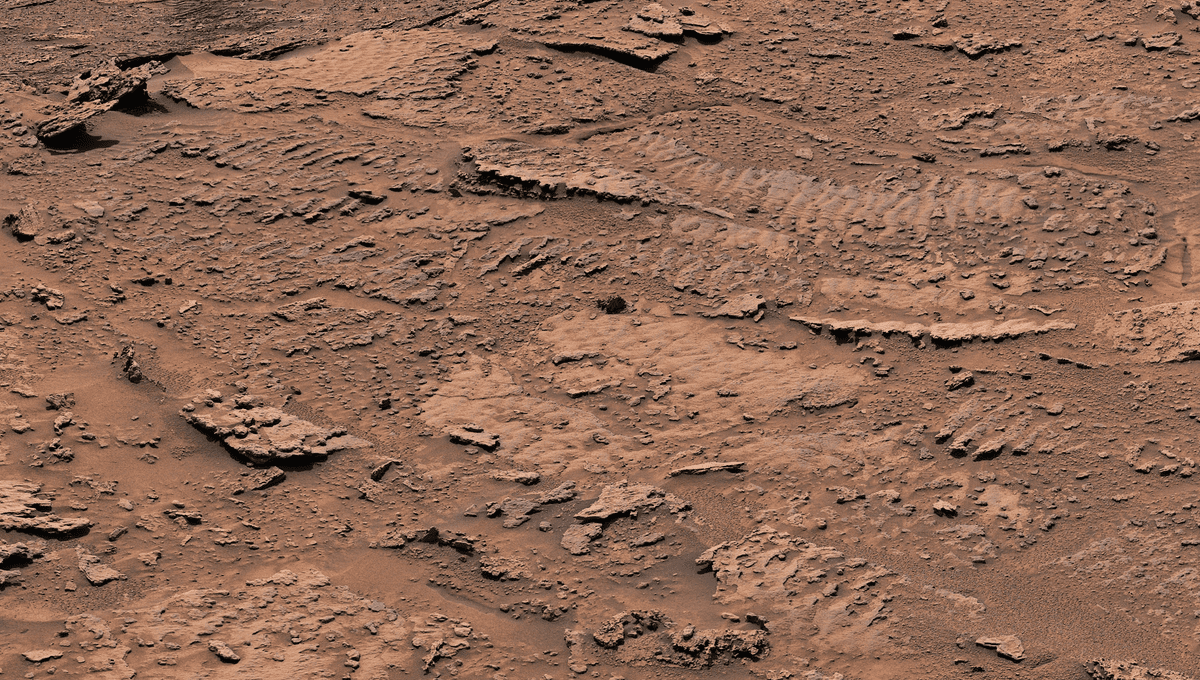
The Curiosity mission team has discovered the clearest evidence of ancient water ripples yet. Billions of years ago on Mars, waves on the surface of shallow water shook sediment at the bottom. As the water evaporated and the planet dried, the impression of waves turned into rocks that have now been spotted by the NASA rover.
Curiosity has been exploring an ancient lake in what is now Gale Crater. Over its many years on Mars, the rover has been taking a trip back in time by ascending Mount Sharp, which is made of layers that formed at different epochs. The base of the mountain is the oldest, from a time when Mars was warmer and wetter. As Curiosity climbs, it’s getting closer to our time with drier and drier terrain.
However, these “fossilized” ripples – a location dubbed Marker Band – show that halfway up the mountain, it is not as dry as researchers expected. This suggests that this location (and Mars in general) likely had a more complex and wetter climate.
“This is the best evidence of water and waves that we’ve seen in the entire mission,” Ashwin Vasavada, Curiosity’s project scientist at NASA’s Jet Propulsion Laboratory, said in a statement. “We climbed through thousands of feet of lake deposits and never saw evidence like this – and now we found it in a place we expected to be dry.”
The team was interested in getting a drilled sample of the rock, but it is so hard that Curiosity failed a few attempts. This is not the first time that the rover has had to try multiple times to find a soft enough spot to drill a rock – it also happened on the Vera Rubin Ridge, which is located further down the Mountain.
Even if the next few attempts are futile, there are plenty of other targets that the team aims to reach in the coming weeks. Ahead of Curiosity, there is a wind-carved valley called Gediz Valley that appears to have also experienced water erosion from a small river, and maybe landslides and more. The debris left over was spotted last year and Curiosity might get to see it up close soon.
The team also points out the presence of layers in the rocks that they describe as rhythmic, suggesting that they were shaped by cyclical events like dust storms or seasonal weather patterns.
“The wave ripples, debris flows, and rhythmic layers all tell us that the story of wet-to-dry on Mars wasn’t simple,” Vasavada said. “Mars’ ancient climate had a wonderful complexity to it, much like Earth’s.”
Source Link: Curiosity Spots Unexpected Ripples On Mars, Hinting It Was Wetter Than We Thought